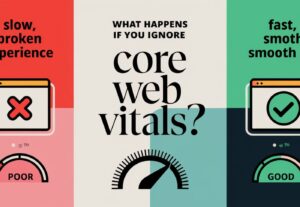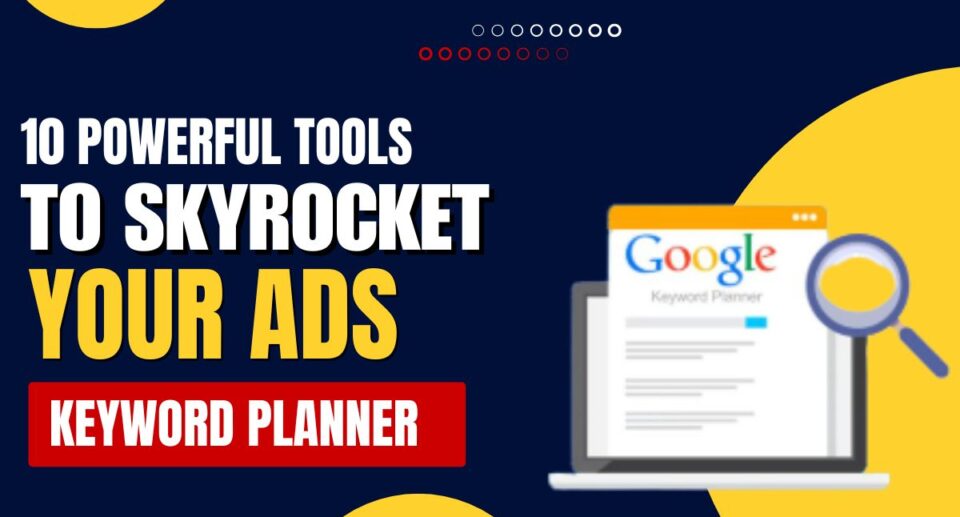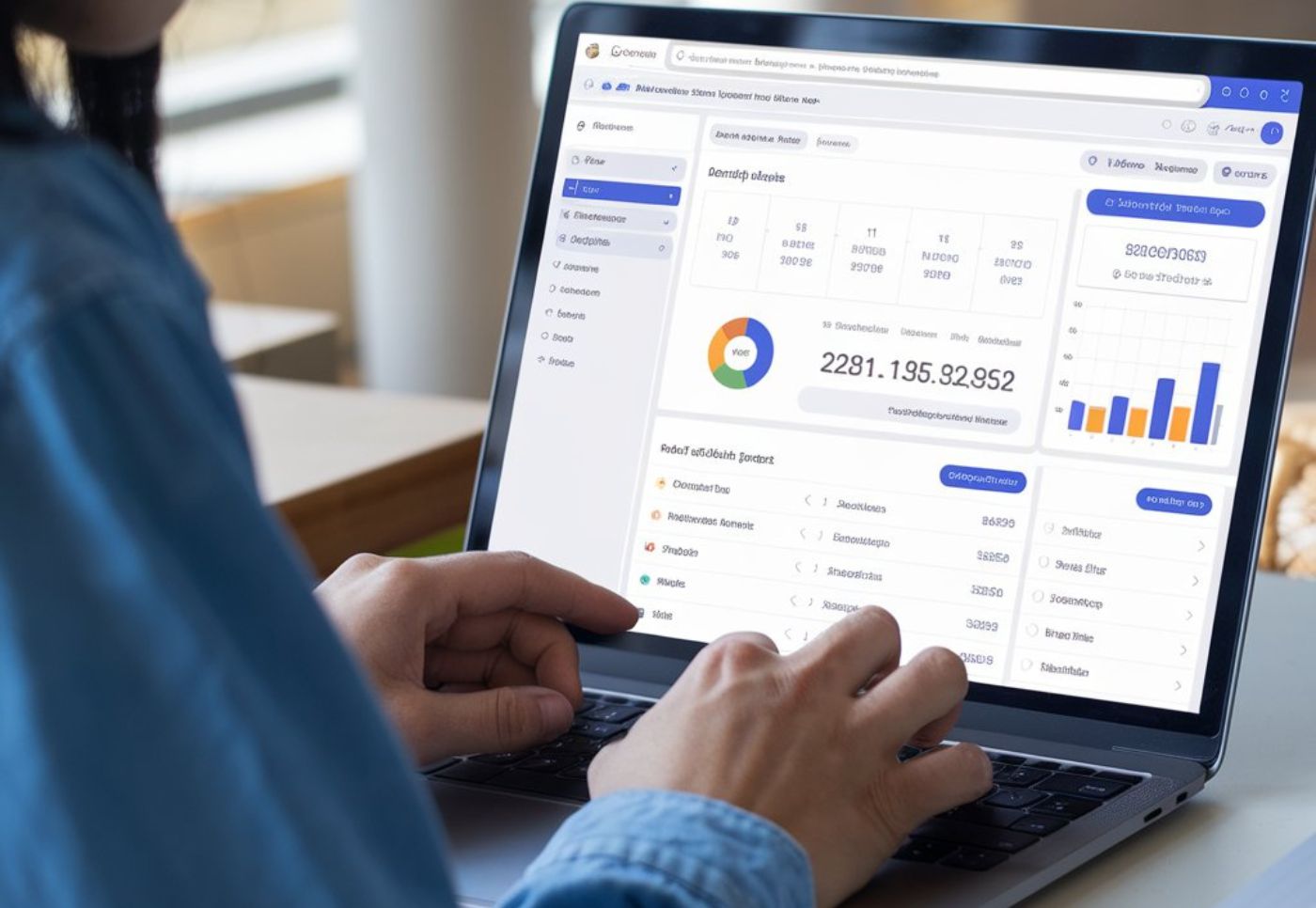Core Web Vitals: 5 Shocking SEO Risks You Face

INTRODUCTION
why users leave before your homepage fully loads? The answer might be hiding in three letters: CWV—short for Core Web Vitals.
Since May 2021, Google has made Core Web Vitals a ranking factor. But this isn’t just about SEO. These metrics directly impact user experience, conversion rates, and ultimately—your revenue.
Still, many businesses ignore them. That’s like running a store with slow service, flickering lights, and a wobbly floor. You might have a great product, but people won’t stick around long enough to see it.
In this post, you’ll learn what Core Web Vitals really are, what happens when you neglect them, and how to fix them before they cost you rankings, traffic, and sales.
 Table of Contents
Table of Contents
What Are Core Web Vitals?
Core Web Vitals are three specific performance metrics introduced by Google to measure real-world user experience on websites.
Here’s what they are, in plain English:
LCP — Largest Contentful Paint
What it measures: How long the biggest content (e.g., hero image or text block) takes to load
Target: Under 2.5 seconds
FID — First Input Delay
What it measures: How quickly your website responds after a user clicks something
Target: Under 100ms
CLS — Cumulative Layout Shift
What it measures: How much your page layout shifts while loading
Target: Less than 0.1
Analogy: Think of LCP as how fast your store opens, FID as how quickly the staff responds to questions, and CLS as whether furniture keeps falling over mid-shopping.
 Why Ignoring Core Web Vitals Is a Big Mistake
Why Ignoring Core Web Vitals Is a Big Mistake
Ignoring CWV is like ignoring your customer’s frustration. Here’s how it impacts your business:
1. Lower Search Rankings
Google clearly stated that Core Web Vitals are part of the ranking algorithm. Poor performance means lower visibility—even if your content is amazing.
According to Google, “Improving Core Web Vitals can improve search visibility and increase user retention.”
2. High Bounce Rates
Slow or unstable websites drive users away fast. Even a 1-second delay in page load can cause a 32% increase in bounce rate.
3. Bad Mobile Experience
Most users visit on mobile. CWV ensures your site loads fast, works smoothly, and looks right—even on a small screen.
4. Lost Revenue
If your site takes forever to load, users abandon carts, skip signups, or never even reach the CTA. Speed equals money.
Real Case Study:
A client had an LCP of 6.1 seconds. After optimization (now 2.2s), their bounce rate dropped by 38% and organic traffic increased by 48% in 3 months—without adding any new content.
Best Tools to Check and Improve Core Web Vitals
You can’t fix what you can’t measure. These tools help you test, analyze, and optimize Core Web Vitals:
| Tool | Purpose | External Link |
|---|---|---|
| PageSpeed Insights | Google’s go-to tool for CWV | https://pagespeed.web.dev |
| Lighthouse | Browser-based audits for performance & SEO | https://developer.chrome.com/docs/lighthouse |
| Web.dev | Learning + CWV scoring combined | https://web.dev/measure/ |
| Chrome DevTools | Detailed developer-level analysis | https://developer.chrome.com/docs/devtools/ |
| GTmetrix | Combines CWV + advanced loading metrics | https://gtmetrix.com |
Tip: Always check both mobile and desktop scores. Google prioritizes mobile-first indexing.
How to Fix Core Web Vitals: Actionable Strategies
You don’t need to be a developer to improve your CWV. But you do need to know where to start.
H3: Fixing LCP — Speed Up Load Time
Optimize images (use WebP, compress)
Use lazy loading
Eliminate render-blocking resources
Use a content delivery network (CDN)
H3: Fixing FID — Improve Interactivity
Minimize JavaScript execution
Use browser caching
Reduce third-party scripts (like ad tags or social embeds)
H3: Fixing CLS — Stop Visual Shifts
Always set image dimensions
Reserve space for ads, embeds, or pop-ups
Avoid loading fonts that reflow layout
Pro Tip:
Use Google Tag Manager responsibly. Too many scripts or triggers can negatively impact FID.
 How to Measure Long-Term Impact
How to Measure Long-Term Impact
Don’t stop at fixing CWV. Track your performance over time to see ROI.
Monitor with These Tools:
Search Console → Page Experience Report
Google Analytics 4 → Engagement & Conversion Rates
Lighthouse → Performance history in Chrome DevTools
Businesses who prioritize site speed consistently report lower bounce rates, higher rankings, and better user engagement.
FAQs
1. Are Core Web Vitals still important in 2024?
Absolutely. Google continues to prioritize page experience. Core Web Vitals remain a key ranking factor.
2. Can a slow website affect my sales?
Yes. Even a 1-second delay can lead to conversion drops of 7% or more.
3. How do I test Core Web Vitals for free?
Use PageSpeed Insights or Web.dev. Both are free and reliable.
4. Does improving Core Web Vitals guarantee top rankings?
Not alone. But poor CWV can prevent you from ranking well—even with great content.
5. Should I hire a developer to fix Core Web Vitals?
If you’re non-technical and your CWV scores are poor, yes. The investment often pays off in traffic and conversions.
Conclusion
Ignoring Core Web Vitals in today’s digital world is like ignoring the foundation of your house. You can decorate it with the best content, design, and SEO—but it’ll still crumble if it doesn’t load fast, interact smoothly, and stay visually stable.
Search engines care. Users care. Your revenue depends on it.
Call to Action 1: Run your site through PageSpeed Insights now and check your LCP, FID, and CLS.
Call to Action 2: Share this with your dev team or SEO agency. Make Core Web Vitals a priority, not an afterthought.

 Table of Contents
Table of Contents Why Ignoring Core Web Vitals Is a Big Mistake
Why Ignoring Core Web Vitals Is a Big Mistake

 How to Measure Long-Term Impact
How to Measure Long-Term Impact



